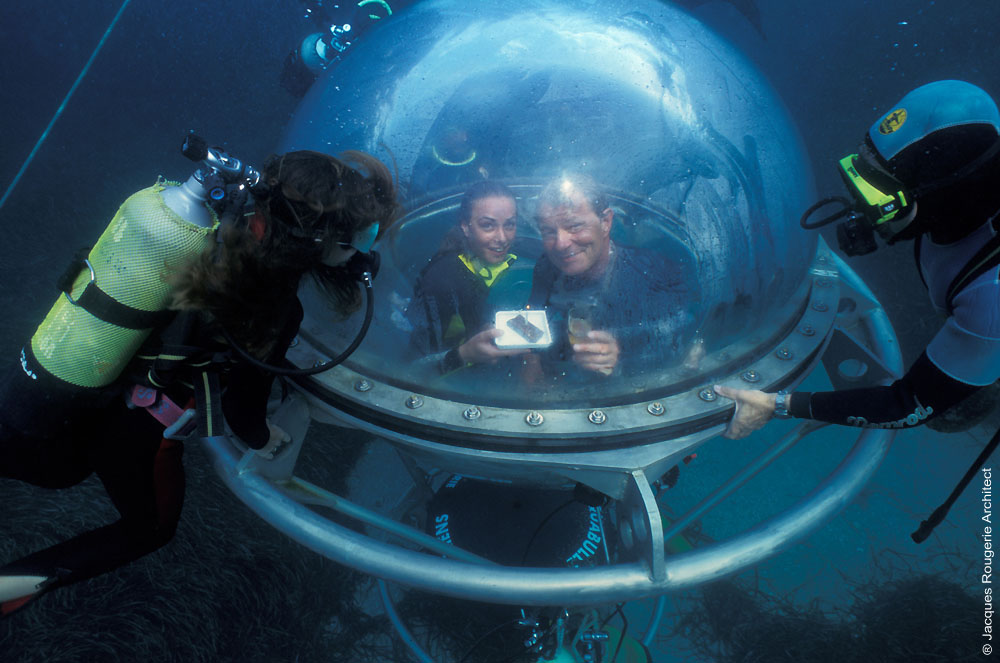
China’s Futuristic Ocean Lab Dubbed ‘Underwater Space Station’ Could Be Ready By 2030
In the age of rapid technological advancement and global competition for scientific dominance, China has set its sights not only on the skies — but also the depths of the sea. A bold new project, often referred to as the “Underwater Space Station”, is now in development and could be operational as soon as 2030. Officially known as a deep-sea scientific research platform, this massive underwater laboratory aims to explore, monitor, and potentially exploit the mysterious world beneath the ocean’s surface.
The facility is part of China's long-term marine strategy and is being developed under the oversight of the Chinese Academy of Sciences and several other government-affiliated agencies. Situated deep in the South China Sea, the station is expected to operate at depths of over 1,000 meters, a realm where sunlight doesn’t reach, pressure is intense, and life becomes alien-like. The goal? To build a self-sustaining, crewed lab that functions underwater for extended periods — similar in spirit to how the International Space Station operates in orbit.
The lab is expected to house researchers for weeks or even months at a time, enabling continuous monitoring of marine ecosystems, seismic activity, and potential natural resources such as rare minerals and gas hydrates. With state-of-the-art robotics, AI-assisted systems, and pressure-resistant modules, the station would represent the next leap in oceanic research, environmental study, and national security.
Much like space missions, living and working in the deep sea presents enormous challenges. The crushing pressure, isolation, and limited oxygen supply require highly specialized equipment and infrastructure. China plans to overcome these barriers through the integration of nuclear-powered systems, advanced life-support technologies, and AI-enabled environmental controls. The lab could serve as a hub for submersible drones, autonomous research vehicles, and even deep-sea mining operations.
Critics, however, raise concerns about the geopolitical implications of such a facility. Located in a strategically sensitive region, the South China Sea is already a hotspot for territorial disputes. Some experts fear that the lab may not serve purely scientific purposes, but could also act as a permanent military outpost, giving China a technological and territorial advantage in underwater surveillance and control.
China, for its part, maintains that the project is primarily scientific and environmental in nature. Officials emphasize the importance of ocean research in understanding climate change, marine biodiversity, and the sustainable use of ocean resources. Given the rising importance of the ocean economy and deep-sea minerals in green technologies, the initiative could also support global innovation if shared transparently.
The project is still in the developmental phase, but progress is moving swiftly. Prototypes of deep-sea habitats have already been tested, and a full design is expected to be finalized by 2027. If all goes according to plan, China could deploy the full-scale “Underwater Space Station” by 2030, marking a monumental step in human exploration of Earth’s last frontier.
In conclusion, China’s futuristic underwater lab is more than just a technological marvel — it’s a symbol of a shifting scientific paradigm. As nations continue to explore outer space, the deep ocean remains one of the least understood environments on Earth. Projects like this remind us that the next great leap for humanity might not be upward, but downward — into the dark, vast world beneath the waves. Whether this lab becomes a beacon of cooperation or a flashpoint of competition, one thing is certain: the future of science may be as deep as the sea itself.
News in the same category


Ocean Currents Could Generate 2.5x More Power Than Wind Farms, Study Finds

Inside Super-Kamiokande: The Japanese Neutrino Detector Unlocking the Secrets of the Universe

Scientists Shock World By Turning Lead Into Gold — But There’s A Catch

The Real Reason Empire State Building Was Built Using Bricks From A Tiny British Town

James Webb Telescope Uncovers Shocking Update on $10 Quintillion Asteroid Psyche

RFK Jr. Raises Concerns About 5G Health Risks: Brain Function, EMR, and Cancer Link

People Stunned After Learning The True Meaning Behind ‘SOS’ — It’s Not What You Think

Scientists Reach Bottom Of The Red Sea — What They Found Left Them ‘Shaken’

Taste The Toxin? Shocking Lawsuit Targets Skittles Over Alleged Toxic Ingredient

Antarctica Ice Sheet Grows for First Time in 30 Years, Surprising Scientists

‘Japanese Baba Vanga’ Predicts Mega-Tsunami in July 2025 — Warns of a ‘Boiling Sea’ South of Japan

300,000 Americans On Edge As Massive 11,000ft Volcano Shows Signs Of Imminent Eruption

Wildlife Photographer Captures Alligator With No Bite – Internet Baffled How It’s Still Alive

Scientists Stunned By 3.5 Billion-Year-Old Crater Holding Earth’s Earliest Secrets

Massive 100-Mile-Long Lake Mysteriously Reappears 130 Years After Vanishing

Persistence Hunting: How the San People of the Kalahari Master the Art of Endurance

Halley’s Comet Is Back, But This Time, It’s Raining Fire

Greece Rocked By Massive Earthquake As Tsunami Warning Sparks Panic
News Post

The Overview Effect: What Astronauts Realize After Seeing Earth from Space

5 Fruits Listed in the ‘Black Book’ That May Promote Cancer Cell Growth: Avoid Them No Matter How Cheap They Are

25-year-old woman explains condition that makes her ‘look like an 8-year-old’

When There's a Blood Clot in the Body, It May Send You 4 Warning Signals You Shouldn't Ignore

Ocean Currents Could Generate 2.5x More Power Than Wind Farms, Study Finds

Inside Super-Kamiokande: The Japanese Neutrino Detector Unlocking the Secrets of the Universe

Inside The 36-hour Fast: How Your Body Transforms Hour By Hour In Viral New Simulation

9 Natural Ways to Remove Plaque & Tartar Buildup

The Incredible Benefits of Dates: A Nutrient-Packed Superfood

Rude Parents Demanded I Not Eat on the Plane Because Their Spoiled Kid 'Might Throw a Tantrum' – I Taught Them a Lesson Instead

Woman Sees Her Husband Enter Motel with Girl and Come Out an Hour Later Shabby

My MIL Sabotaged My Daughter's Dress Before a School Pageant because She Wasn't Her Bio Grandkid

My FIL Insisted I Go On a Spa Weekend He Paid For – Halfway There, My Neighbor Called Screaming, 'It Was All Their Plan! Go Back Now!'

My Stepmother Kicked Me Out Two Days After My Father Died – The Next Morning, a Bunch of SUVs Showed up in Front of Her House

Eating Too Fast? Here’s Why Slowing Down Can Improve Digestion and Reduce Bloating

Scientists Shock World By Turning Lead Into Gold — But There’s A Catch

Why Letting a Baby “Cry It Out” May Be Harmful: What Science Says

Rh-Null Blood: The World’s Rarest Blood Type, Also Known as "Golden Blood"
